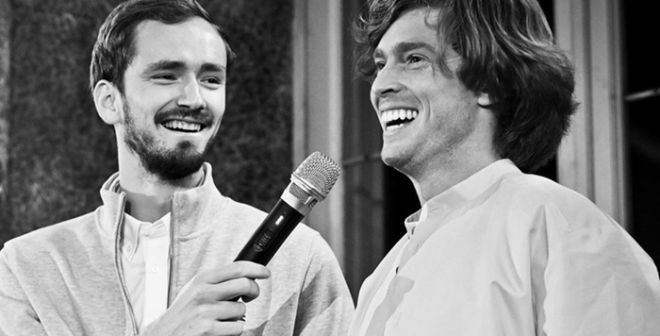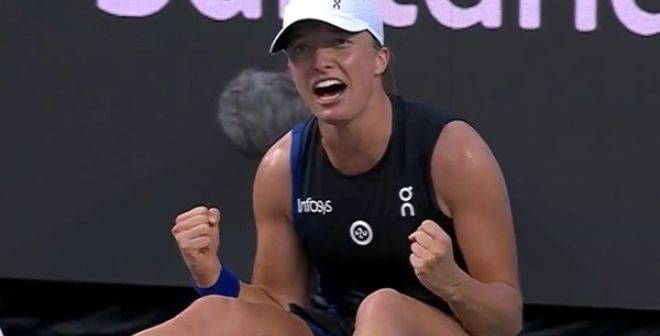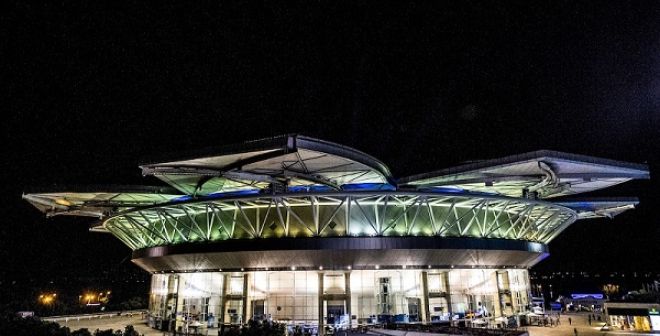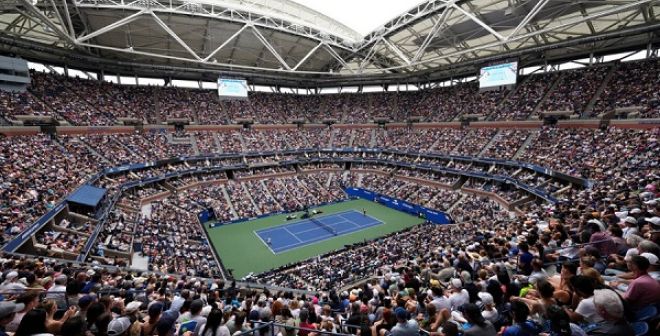Every Grand Slam tournament has its own atmosphere. Melbourne? Colourful. Roland Garros? Passionate. Wimbledon? Felted. What about the U.S. Open, then? If the word "electric" comes to mind, at the end of the day, the most appropriate word seems to be just "American." So American. Explanation in five points, plus decisive game in the last set.
« Bigger is better »
New York is big. And so is Flushing Meadows. This is the original shock to everyone who arrives for the first time in the world's largest complex dedicated to tennis. Twenty-two courts are reserved for the tournament only, while eleven others are owned by the American Federation which has its headquarters here. The largest of them, the Arthur Ashe stadium, has a capacity of 22,547 spectators when the other three Grand Slams are stuck at 15 000 seats on their central court. In short, dizziness is inevitable for those who discover such a setting whether they are spectator... or player. How many first timers at the U.S. Open have been sacrificed on the altar of a "big game" against a champion lived a nightmare of a night on this gigantic Central, with references so different than anywhere else. As long as the public gets involved in this confusing mix of chauvinism and indifference - do not fear the greasy paper and other McDonald packaging which occasionally fly from the stands to the edge of the court - the experience can be a very bad memory.
New York’s crazy nights
Imitated everywhere but equalled nowhere, the "night sessions" made the legend of the American Grand Slam. Those moments when time stops, where spectators get excited, roar and stomp while the two wrestlers on the court are giving all they have in the fifth set. Connors, Agassi, Sampras - undefeated at night in New York in his career! - turned it into a theatre fit for their talent, just like Capriati or the Williams sisters. These "night sessions" have their corollary: the decisive game of the fifth set. The U.S. Open is the only major tournament to end its matches on a tiebreak. This unique recipe gave to tennis some of its greatest moments, between stratospheric level of play, standing ovations, and finally, a winner whose euphoria can only be matched by the despair of the loser: four hours of effort played at the lottery and sometimes a single point... Enough to exacerbate the emotions of all the characters in the drama.
Big mouths and controversies
« Here, it’s my home!» Who other than Jimmy Connors to personify the legend of the U.S. Open? With five titles in New York, obtained on three different surfaces - grass, clay, hard - its 14 semi-finals, the last when he was 39 years old, his bad mood and his big declarations, "Jimbo" embodied this tournament more than anyone. As much as his successes, his spats with John McEnroe, or Andre Agassi entered history... as his fist punching a pushy photographer while the crowd, heavily South American, was invading the stadium to celebrate a triumphant Vilas (1977). The joker hasn't mellowed over the years and even in his fifties has kept all his sarcasm: « Recently, I was in a dressing room with five Top 10 players. There was not a word spoken for half an hour. When I left, I said: 'it was a pleasure to talk with you guys. »
And even when Connors had nothing to do with the scandals, the organizers were doing pretty well to embarrass themselves: in 1996, when American tennis seemed blessed with its four aces: Sampras - Chang - Agassi - Courier, respectively ranked first, third, sixth and ninth in the ATP, the rumour spread like wildfire that the draw had been rigged to distribute the quartet in four different semis. With the revolt of the other players, the organizers were forced to make a new draw. A first in the history of a Grand Slam.
The American Boy doesn't know fear
While the aspiring Australian, British, and to a lesser extent, French champions, are struggling to shine in their local Grand Slam, we can appreciate the young Americans qualified or invited by their federation who come to make some noise in the first week in New York. In a global hierarchy, which seems more and more frozen, the nerves of the American boys are a breath of fresh air on the first few weeks often lacking salt. Only last year, the "young guns" with all their confidence, being used to the fervour of the stands of their college tennis tournaments, cut a few heads, and not the least: Florian Mayer (Jack Sock) Ernests Gulbis (Steve Johnson) Jurgen Melzer (Bradley Klahn) Jerzy Janowicz (Dennis Novikov), Lucie Hradecka (Mallory Burdette) or Francesca Schiavone defeated by a little known Sloane Stephens. Beautiful grouped fire.
If it’s too loud, then you’re too old
In New York, music doesn't soften manners. Every two games, the sound system gets underway and spits his hits, rock or hip hop, as an attempt to cover the noise of the planes taking off from the nearby La Guardia Airport. Whatever the content, the point is for it to be heavy: Springsteen, The Black Eyed Peas, AC/DC... The players say they have learned to no longer pay attention. Fortunately for them, because even if the other three Grand Slams are still preserved from the din, the Asian and European tournaments are getting more and more into it. Still, the American cousins seem to always be one step ahead: there's only in the Arthur Ashe Stadium that Roger Federer, dressed entirely in black, can enter the court to play a major final at the sound of the imperial march without being ridiculous.
And what other tournament can boast of launching two weeks of tennis with the show of the pop starlet of the moment - Carly Rae Jepsen in 2012 - or a confirmed rock star - Lenny Kravitz this year - before the eyes of the "First lady "Michelle Obama herself?
Goodbye, Super Saturday
This one will be sorely missed. The very special program of the U.S. Open was making of the last Saturday the climax of the tournament. "Super Saturday" was starting with the first men semi-final, followed by the ladies final and finally the second men semi-final. A feast for the yellow ball lovers which culminated in 1984, when first Lendl and Cash, then Navratilova and Evert, and last but not least, McEnroe and Connors, played glorious matches in the furnace of Flushing. Legitimately criticized for its lack of sporting fairness - the winner of the second men semi-final had his rest time reduced to a minimum before the final - this "Super Saturday" lost part of his glory in recent years, hurricanes followed one another over New York, making it impossible to play the three scheduled meetings and the postponement of the men's final to the Monday during the last five editions! It is therefore the end of a legendary chapter in the history of the tournament: this year, the men semi-finals will take place on the Saturday, the women's final on the Sunday, and the men's final on the third Monday. The U.S. Open never does anything like the others.
By Guillaume Willecoq






